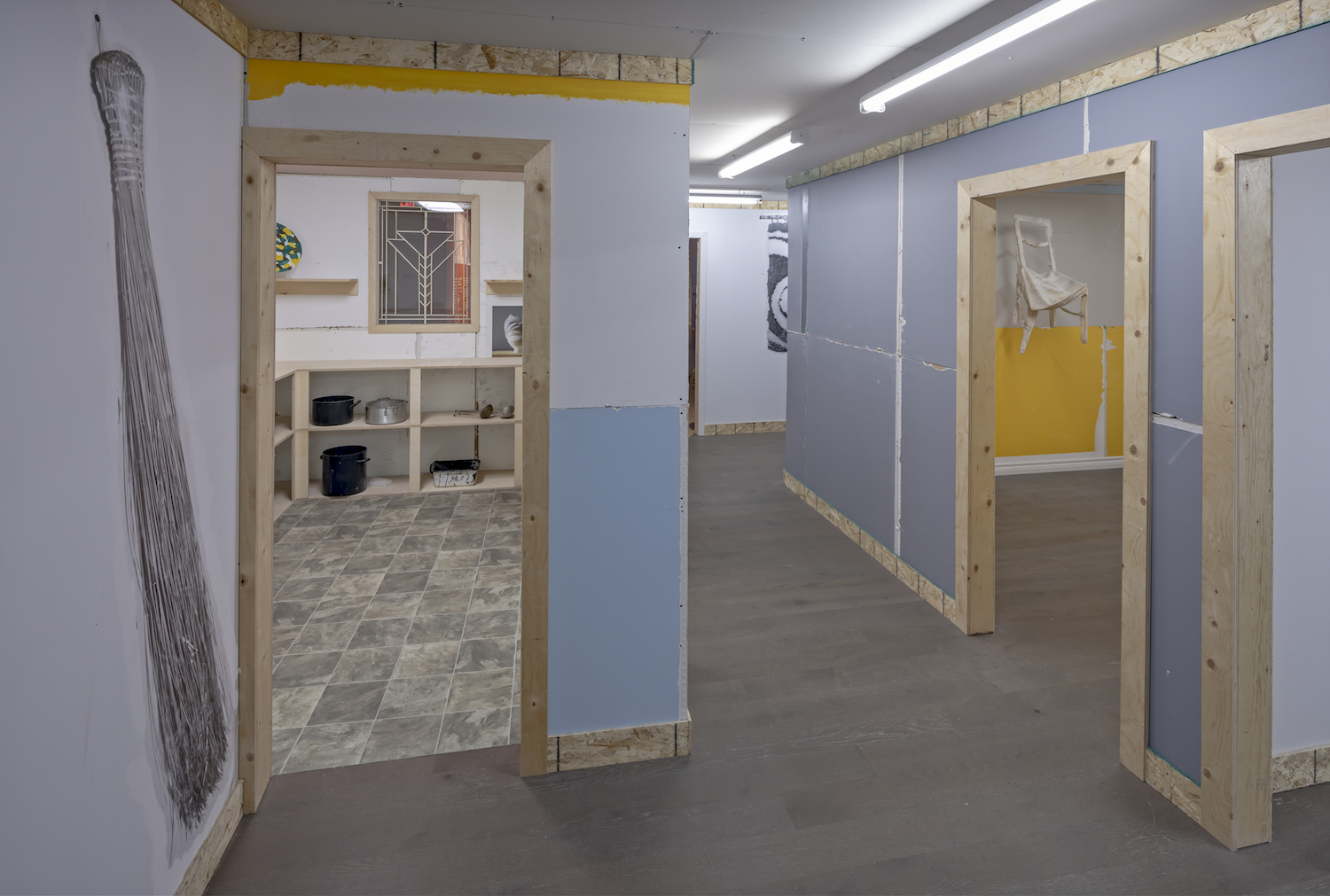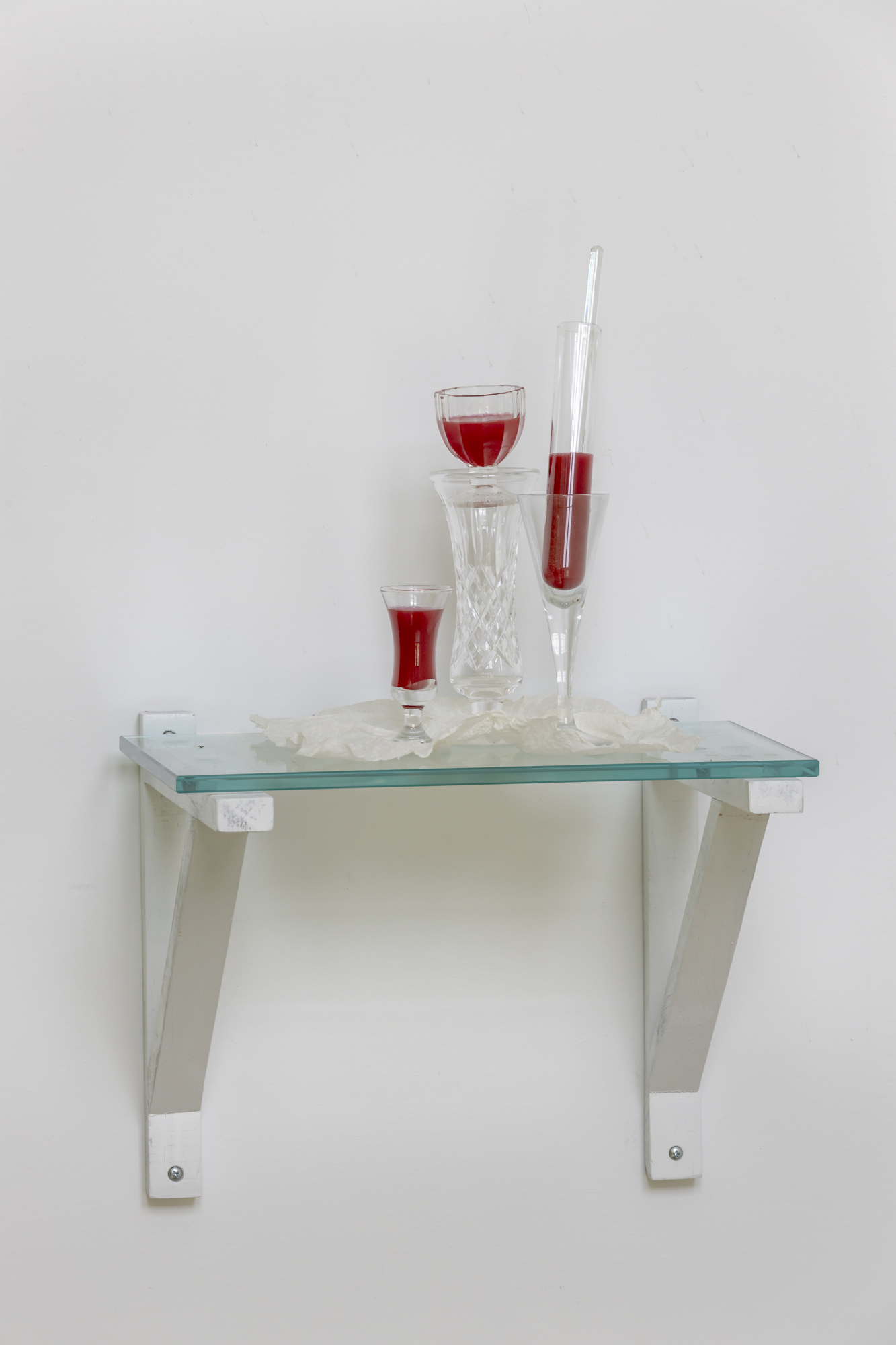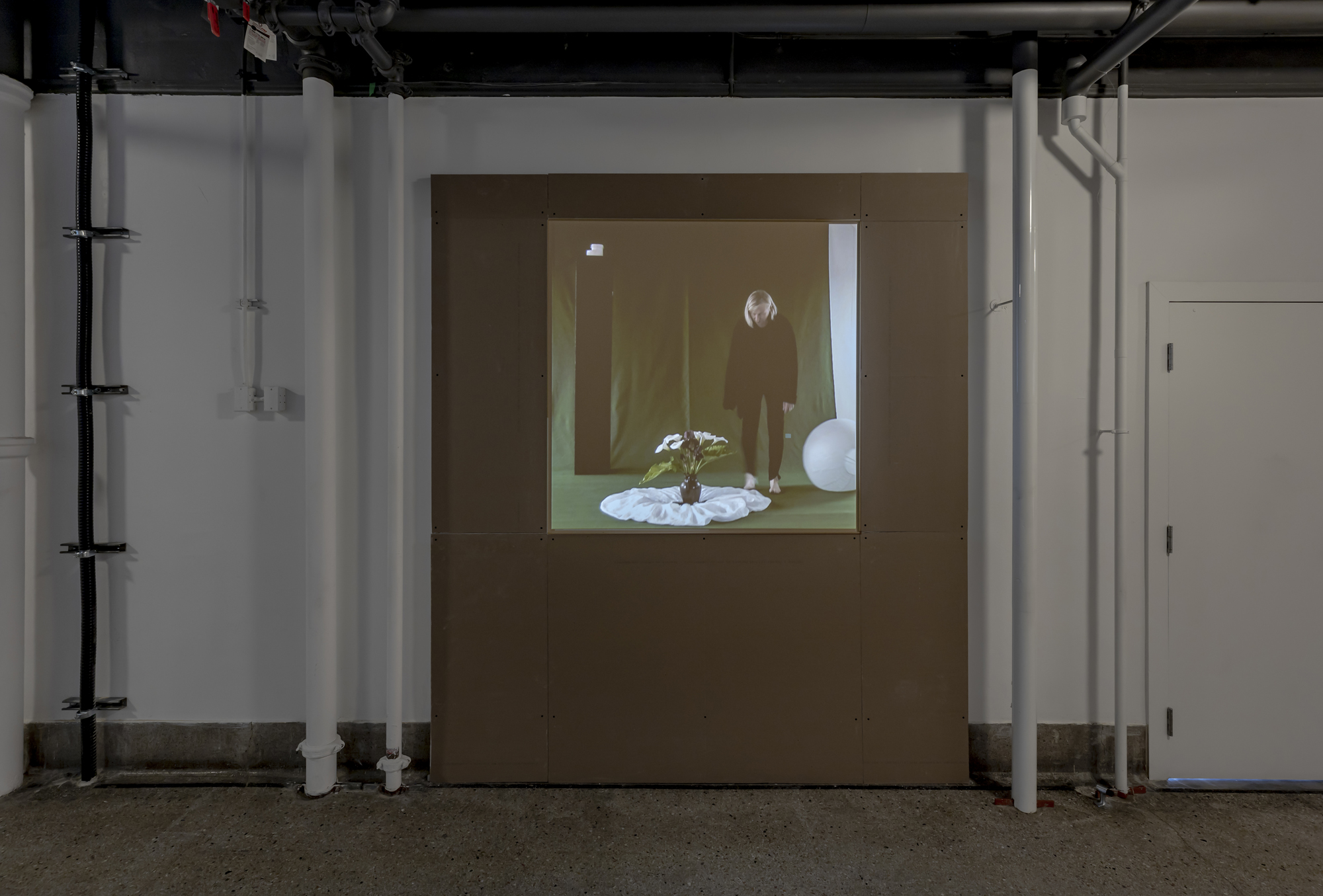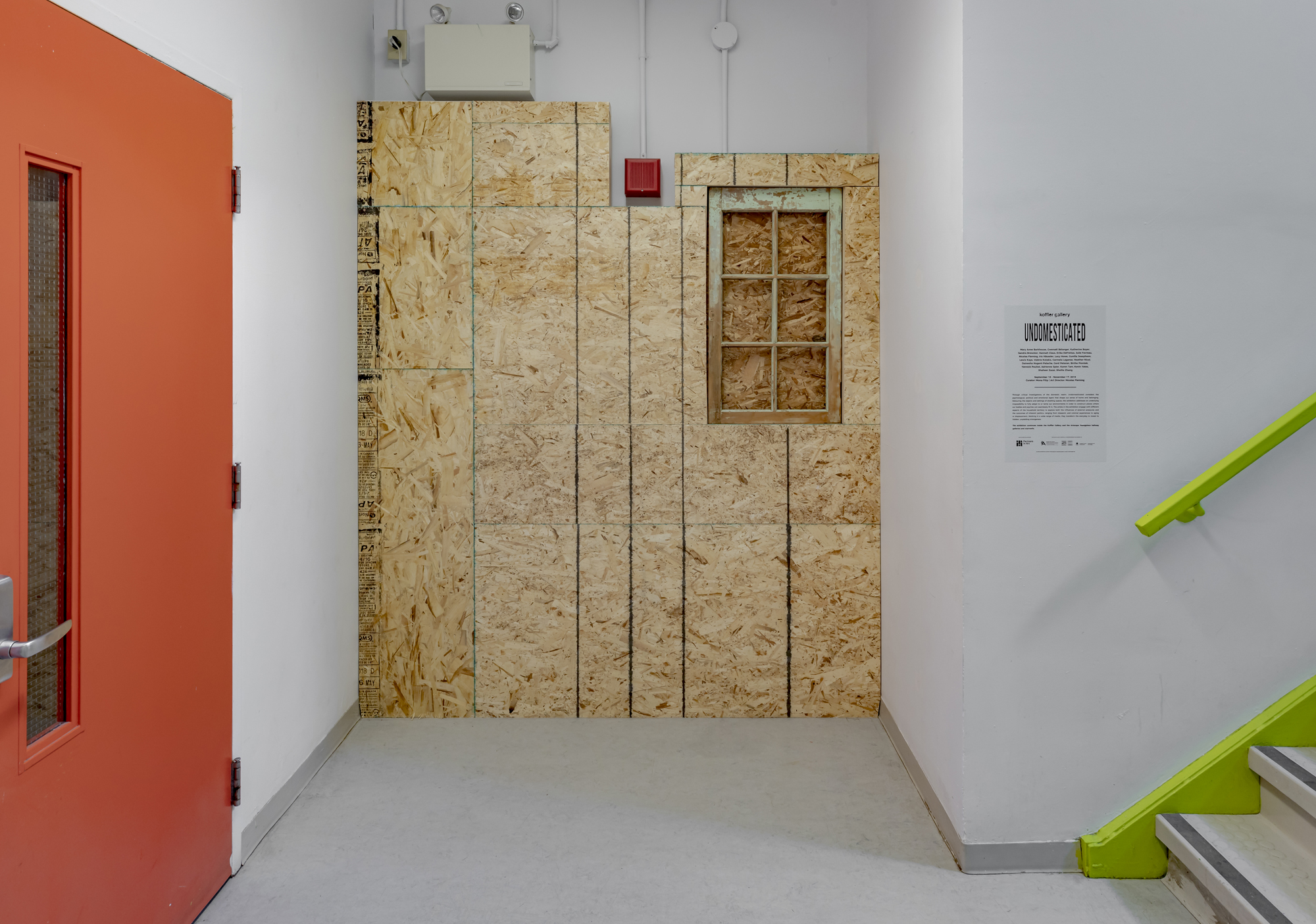UNDOMESTICATED
Mary Anne Barkhouse, Gwenaël Bélanger, Katherine Boyer, Sandra Brewster, Hannah Claus, Erika DeFreitas, Julie Favreau, Nicolas Fleming, Iris Häussler, Lucy Howe, Gunilla Josephson, Lewis Kaye, Valerie Kolakis, Carmela Laganse, Heather Nicol, Dainesha Nugent-Palache, Gord Peteran, Birthe Piontek, Yannick Pouliot, Adrienne Spier, Karen Tam, Kevin Yates, Shaheer Zazai, Shellie Zhang
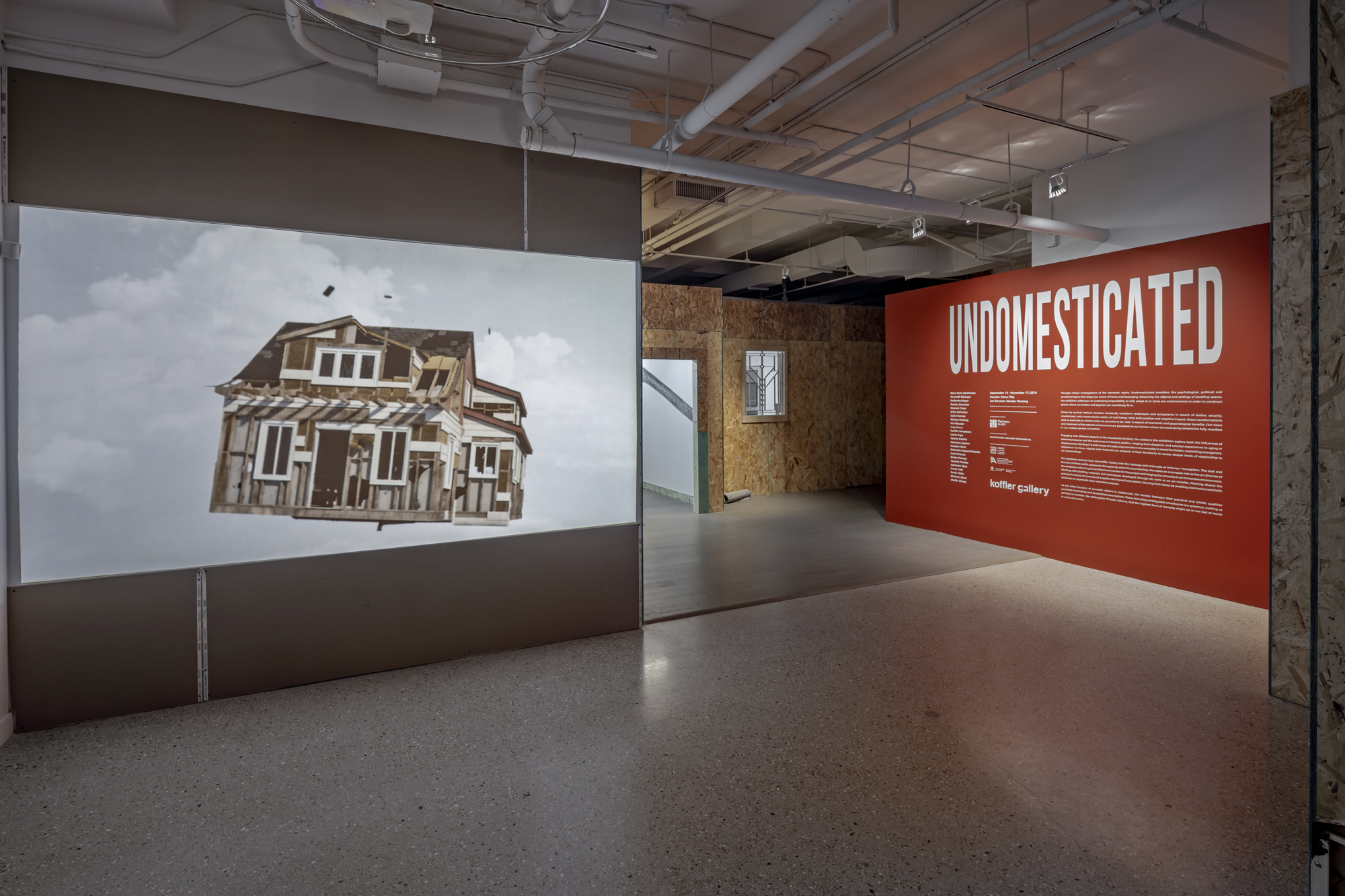



Curated by Mona Filip
Art Direction by Nicolas Fleming
Koffler Gallery, 2021
Through critical investigations of the domestic realm, Undomesticated considers the psychological, political and emotional layers that shape our sense of home and belonging. Detouring the objects and settings of dwelling spaces, the exhibition addresses an underlying impossibility to fully adapt to or tame our environments in order to construct places where our bodies and psyches can seamlessly fit in.
Driven by survival instinct, humans constantly transform landscapes and ecosystems in search of shelter, security, nourishment, and a more elusive notion of ‘well-being.’ With both positive and negative impact, these transformations seek to eradicate or control what we perceive to be ‘wild’ in search of economic and psychological benefits. Our views and treatment of the natural environment are paralleled in our homes where domesticating tendencies fully manifest in our endless pursuit of comfort.
Art Direction by Nicolas Fleming
Exhibition
Koffler Gallery, 2021
Photo documentation by Toni Hafkenscheid
Through critical investigations of the domestic realm, Undomesticated considers the psychological, political and emotional layers that shape our sense of home and belonging. Detouring the objects and settings of dwelling spaces, the exhibition addresses an underlying impossibility to fully adapt to or tame our environments in order to construct places where our bodies and psyches can seamlessly fit in.
Driven by survival instinct, humans constantly transform landscapes and ecosystems in search of shelter, security, nourishment, and a more elusive notion of ‘well-being.’ With both positive and negative impact, these transformations seek to eradicate or control what we perceive to be ‘wild’ in search of economic and psychological benefits. Our views and treatment of the natural environment are paralleled in our homes where domesticating tendencies fully manifest in our endless pursuit of comfort.







Engaging with different aspects of the household territory, the artists in this exhibition explore both the influences of external pressures and the outcomes of inherent politics, ranging from diasporic and colonial experiences to aging or displacement. Working in a wide range of media, they transform the everyday to reveal its hidden, unyielding strangeness. Ubiquitous furniture, objects and materials are stripped of their familiarity to access deeper levels of relationship to our surroundings.
The exhibition extends from the Koffler Gallery into the hallways and stairwells of Artscape Youngplace. The look and function of these public spaces are disrupted by artist Nicolas Fleming who takes on a complex role as the art director of the exhibition, reframing the architectural context for the project and staging the artworks in an immersive environment. Working with building materials and techniques developed through his work as an art installer, Fleming diverts the primary functions of commercial supplies like drywall and plaster, blurring their status by enabling overlooked aesthetic attributes to supersede their intended purpose.
As the initial function of domestic objects is supplanted, the tension between their practical and artistic qualities generates uncertainty and destabilizes assumptions. These alienating ambiguities unwelcome our presence, inviting us perhaps to consider, like philosopher Theodor Adorno, that the highest form of morality might be to not feel at home in one’s own home.
The exhibition extends from the Koffler Gallery into the hallways and stairwells of Artscape Youngplace. The look and function of these public spaces are disrupted by artist Nicolas Fleming who takes on a complex role as the art director of the exhibition, reframing the architectural context for the project and staging the artworks in an immersive environment. Working with building materials and techniques developed through his work as an art installer, Fleming diverts the primary functions of commercial supplies like drywall and plaster, blurring their status by enabling overlooked aesthetic attributes to supersede their intended purpose.
As the initial function of domestic objects is supplanted, the tension between their practical and artistic qualities generates uncertainty and destabilizes assumptions. These alienating ambiguities unwelcome our presence, inviting us perhaps to consider, like philosopher Theodor Adorno, that the highest form of morality might be to not feel at home in one’s own home.








